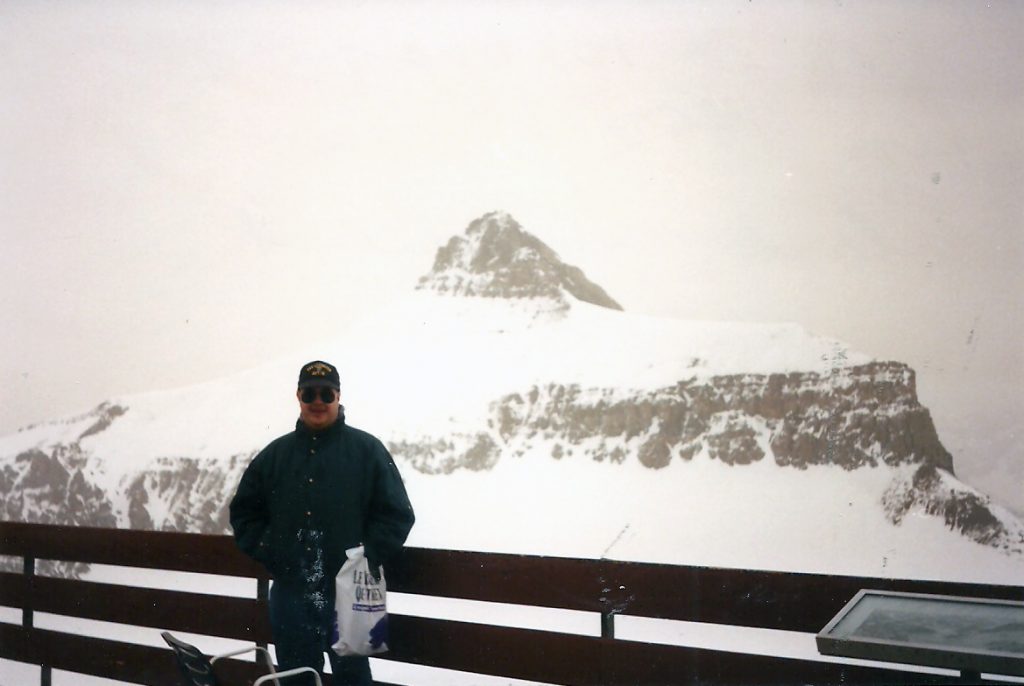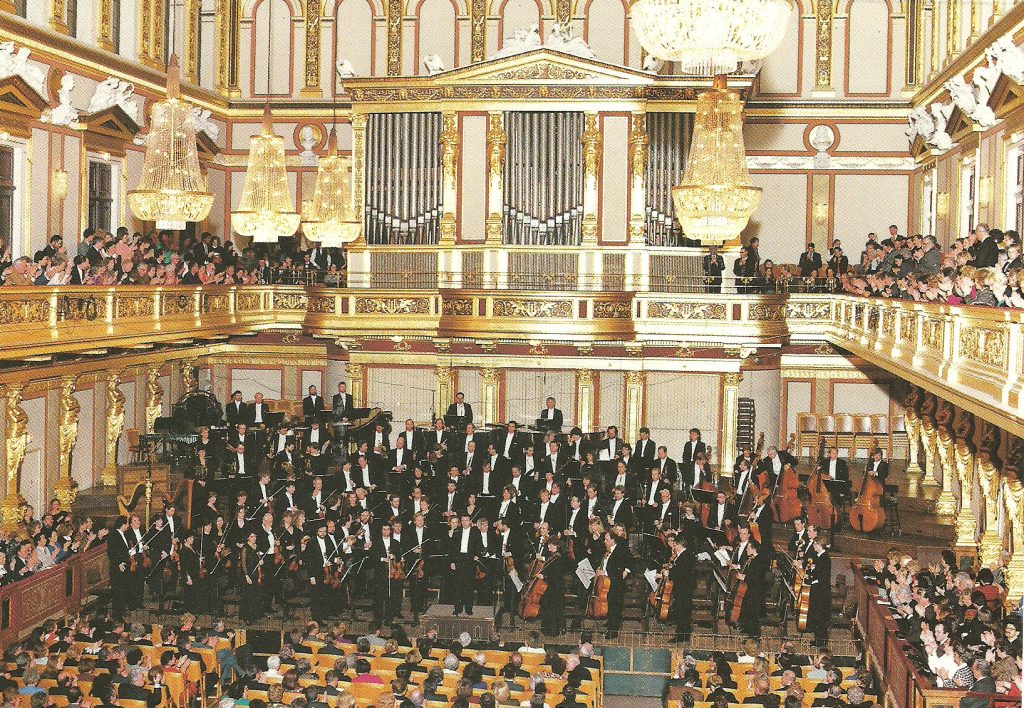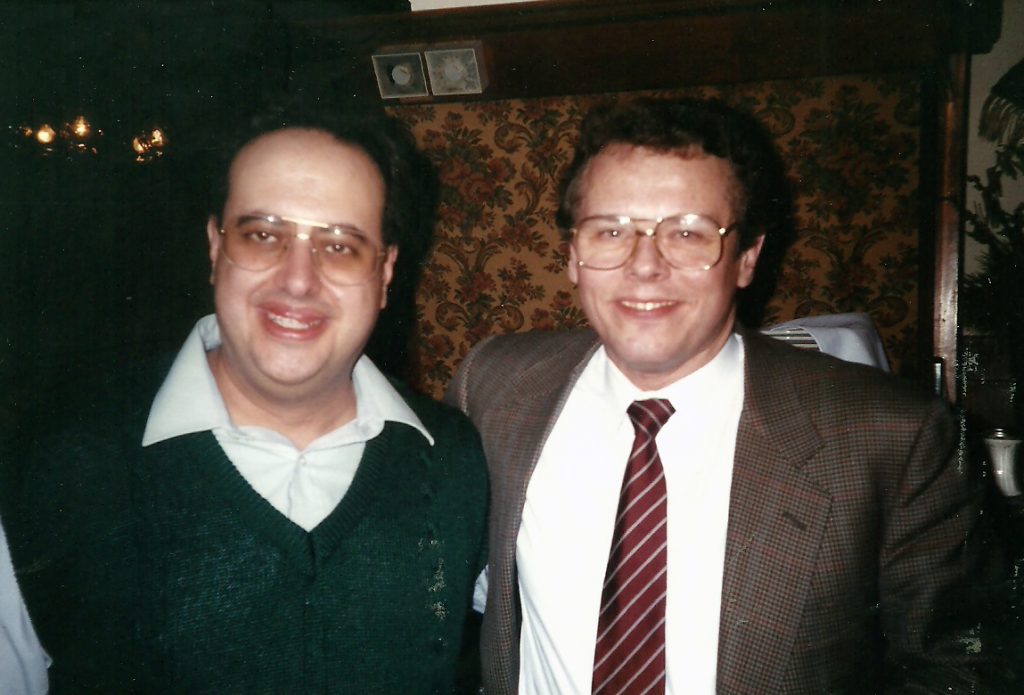The Year 1992
It has been a while since I last blogged about my musical career, what with “blogger’s block” and finishing up blogs about recording with the OPO and tributes to both Mariss Jansons and Anton Coppola. However, here I am, ready to resume where I left off. I now have the time, due to the work stoppage due to the corona virus to attend to my blog. If memory serves, I left off at the point where the orchestra finished its Fall 1991 tour to the USA. The concert at Carnegie Hall was a triumph for the orchestra and we concluded the tour in Washington, DC at the Kennedy Center. The concert went very well, and I took leave of the orchestra as they traveled back to Oslo. My wife and daughters were in Illinois since before the tour (we had decided to make it a holiday in the USA for them, and I would join them for a few weeks before we all took a flight back to Oslo).
I took a train to Chicago and joined my family for a month’s vacation in the USA, visiting family in both in Illinois and New York before returning to Oslo in January 1992..
An Interesting Year
1992 would prove to be an interesting year musically for the orchestra and for me musically. In previous blog entries, I had mentioned that it was a banner year for recording for the orchestra, and so it proved.
It was also a banner year for the orchestra as far as touring went. Our second USA tour established us firmly as an orchestra of international renown – we had made a very good impression on our first USA tour in 1987, but this tour had consolidated it.
Recording-wise, we had four recordings scheduled throughout the year. In January 1992, we recorded Dvorak’s Symphony No. 7 in 8; in May we recorded Sibelius’ Second Symphony as well as some shorter works as a filler as well as Dvorak’s Cello Concerto and Tchaikovsky’s Rococco Variations; and in November, we recorded Stravinsky’s “Le Sacre du Printemps”
and “Petrouchka”. Needless to say I was, as the saying goes, “pumped up” for each and every recording.
Touring-wise, it was just as interesting. In March, we toured Switzerland, Germany and Austria, and in November we went to the UK and Amsterdam. The Swiss/German/Austrian tour in March was one of the most challenging and rewarding tours of my entire tenure. We started the tour in Basel, Switzerland and ended it in Vienna with a super-charged concert at the Musikverein. The programs were quite the challenge: They included Dvorak’s Seventh Symphony, Bartok’s Concerto for Orchestra, Shostakovitch’s Sixth Symphony and Stravinsky’s “Le Sacre du Printemps”. Johan Svendsen’s overture “Carnval in Paris” rounded out the program, plus a couple of the usual encores, one of which was the final section of the suite from “The Miraculous Mandarin” of Bela Bartok.” Typical Jansons programs. Among the venues we visited was Basel, Zurich, Geneva, and Lausanne (where we had a free day, which many of us spent in the mountains.); from there we traveled by train to Bonn, Germany, which served as our base while we played concerts in Bonn, Dusseldorf and Cologne. From there, we went to Austria and played in Linz and our final concert in Vienna.
As I noted, the tour was demanding, and in order to give something other than just the second timpani part to”Le Sacre” to my assistant, we both agreed that he’d also play the Bartok Concerto for Orchestra as well. I had all of the other works, which was more than enough.
For instruments, we took two sets of timpani on this tour, as the Stravinsky required a second set. We took the Light Metropolitan B’s, and the three larger Hinger timpani as well as the 20 inch Hinger piccolo timpano, required for the high b in the Stravinsky. I used the Lights, and Trygve played the Hingers. We re-equipped both sets of timpani with Remo plastic heads (hazy) for this tour in order to minimize any potential problems we might have encountered on the tour. At this stage, I was still a bit leery of taking calfskin on tour, but I gained the courage to do so later on.
First stop on the tour was Basel, Switzerland. We arrived there safely the last day of February with enough time to walk about the town. Trygve, Christian, and Bjorn invited me to join them for dinner at a fondue restaurant for an early birthday celebration (I would turn 39 on March 6th during the tour). I really appreciated the gesture and enjoyed the time with them. The fondues were great! I remember it being a sunny afternoon and evening, and Basel was bathed in a warm afterglow as the sun went down. It’s funny how things like this stand out in memory.
The concert in Basel on March 1st went well, and it was well received. I played the Svendsen and Dvorak as well as the encores, and Trygve played the Bartok. This was the first time we split a concert on tour, and I think he appreciated the opportunity to play something challenging. From Basel, we went to Zurich where “Le Sacre du Printemps” was the “main event”. That went well, and it was on to Geneva. I had always followed the Suisse Romande on records, and here we were playing at their home, which was the Victoria Hall. I had played there twice before, in 1985 and 1989, but this time it was different. The orchestra was larger and the program was composed of only two works, both personal favorites of mine. Dvorak’s Seventh opened the concert, and “Le Sacre” closed it, plus the usual encores. At the sound check rehearsal, I found Mariss personally re-seating the orchestra as I came on stage, and something about the way he had the timpani and percussion didn’t seem right to me. It was mainly the fact that I was separated from the bass drum by quite a distance. To be fair, the stage was a bit smaller and narrower than the Konserthus in Oslo. I could see in a glance that an adjustment had to be made, and I discussed it with him offstage and in private. While his solution might have worked, I felt that the distance might have negative consequences. As a result, both Trygve and I were placed closer to the bass drum. As I remember, we were on a lower platform, and the bass drum and percussion on the row above and behind us, but still close enough for ensemble purposes.
Other than the narrower stage, the Hall had excellent acoustics and was beautiful in an old-world way. The concert turned out to be a triumph. We played our hearts out in both works, and Mariss was very satisfied with the results. So far, this was a good start to the tour. We repeated the same program in Lausanne, which was also well received and it was there that we had a free day. Lausanne is situated on the shores of Lac Leman (otherwise known as Lake Geneva) and is not far from the Jura Mountains. The free day was actually March 5th, the day before my birthday. Several of our orchestra (myself included) boarded a bus and headed for the mountains, more specifically a ski town called La Diableret in the Vaud Alps. I was (and still am) a non-skier and was along for the ride and view. I was not the only non-skier, and us non-skiers banded together and took a cable car up to La Glacier, which is about 3,600 meters above sea level (almost 11,000 feet). The Alps are wonderful to behold and very stark in the configuration. While the weather was not the best, it was still clear enough to see quite a bit of the surrounding area and I enjoyed the excursion very much. We had to change cable cars twice in order to reach the top. I admit to being a little apprehensive at first as the first cable cars were a bit small – and four seaters, to boot! Luckily the other cars were much larger. If memory serves, we had a hot snack at a small bistro at the top.

The next day was March 6th, my birthday and we used that as a travel day, taking the train- called the “Mount Blanc” – all the way from Lausanne to Bonn, Germany. What amazed me was that everything was right on schedule. By five thirty that afternoon we were snug in our rooms at the Hotel Konigsberg. That evening, Christian, Trygve, Einar and Bjorn took me out for my real birthday (they treated me to fondue in Basel earlier), and this time we went to a Balkan grill, where we enjoyed a superb meal with five different kinds of meat, french fries, salad, ice cream, etc. It was pretty special.
We stayed in Bonn for several days, using it as a base camp while we did run-out concerts in Dusselforf and Cologne, as well as playing in the Beethovenhalle in Bonn itself. The concerts in Cologne and Bonn went well, as did the concert in Bonn, which was the Dvorak/Bartok program which I split with my assistant. I remember being impressed with Bonn as a university town somewhat comparable in many ways to its “sister city”, Oxford, England. The university buildings lay just outside our hotel. Bonn is the birthplace of Ludwig van Beethoven, and I took the opportunity to visit his birthplace. In Cologne, I had the opportunity to visit the Cathedral, with its immense towers. It truly is a colossal building. When I visited the building, I was also impressed by the height of the nave. The whole impression one got was to look up…and up…and up.
After we finished up in Bonn, we finished the tour with concerts in Linz and Vienna, Austria. Linz is special to me because not far away is the Stift St. Florian, where the noted composer Anton Bruckner was organist for several years and is buried below the chapel, He was also organist of the Cathedral in Linz. The venue there was the Brucknerhalle and we played a very good concert. I also had time to walk about the town and actually, if memory serves me, made a trip out to St. Florian. I do remember walking about the monastery grounds and visiting the chapel. It was a cloudy day (we had a fee day as I recall) and the chapel’s Baroque interior was impressive (even though there was some renovation going on). I went down into the crypt and stood before the tomb of Anton Bruckner, who is one of my favorite composers. I reflected on his life and and work and considered myself fortunate to have had the chance to visit not only his tomb, but his workplace and homeland.

The concert in Linz went well, and then it was on to our final stop and high point of the tour, Vienna! We were all looking forward to this concert with great anticipation. As I may have noted elsewhere, Vienna is always perhaps the king of “The” major performing venues, and to play in the Musikkverein is the European equivalent of playing in Carnegie Hall. The program consisted of just two works: Shostakovich’s Sixth Symphony and Stravinsky’s “Le Sacre du Printemps”. I think all of us were a little apprehensive as we knew that we had to be at the absolute top of our game here, While the tour up to now had been very successful, this was the ultimate test. If we made good here, we had it made. If not, well….
I remember the concert like it was yesterday, even though twenty-eight years have past. The hall was full and the audience was full of anticipation.
I am glad to report that the results were beyond even our wildest expectations. We all gave 100 percent and the very long standing ovation was music to our ears. I know Mariss was extremely happy and all of us in the orchestra were “over the moon” with joy and relief. I can honestly say that this was the concert which really launched us as an ensemble to be taken seriously. Of course, we blew off steam at a fantastic post-concert party at Matyaskellar in which everybody had a great time!

After returning home in triumph, there were the Dvorak Cello Concerto and Sibelius recordings in May, and a quick trip to Seville, Spain for a concert in celebration of Expo ’92. I think that we played Mahler’s 5th Symphony. I wish memory served me better, but I do know that the concert was a success.
The fall of 1992 was busy as well as I’ve noticed earlier. In November, in addition to our concerts in Oslo, we embarked on a five concert tour of the UK and Amsterdam, Holland. Again, Stravinsky’s “Le Sacre du Printemps was on the docket, along with Rachmaninov Second Symphony, as well as Nordheim’s “Tenebrae” for Cello and Orchestra and “From Above” by Olav Anton Thommesen. Grieg’s Piano Concerto and Weber’s Overture to “Oberon” filled out the program list. We played two concerts at the Barbican in London, plus one in Glasgow, Scotland and concluded the tour in Amsterdam, playing the Weber, Grieg and Stravinsky in the excellent acoustics of the Concertgebouw.
The concerts in London were played as part of a Festival of Scandinavian Music, and the first concert was attended by Her Majesty Queen Elizabeth and Prince Philip, then the Duke of Edinburgh. If memory serves, we played the Thommesen, Greig and Rachmaninov Second Symphony. The Stravinsky was played at the second concert.
Overall the tour was a success, although in Glasgow I had a bit of a problem with the Stravinsky. I messed up a bar after the 11/4, but was able to get “right back on the horse” so to speak. The lesson I learned was never, ever, to take Le Sacre” for granted, and I never again did. Amsterdam was a triumph, and then it was back to Oslo, where we recorded both Le Sacre and Petrouhcka for EMI. I have already reported on those recording sessions in a previous blog post, so I’ll close this post with the observation that 1992 was indeed a “fast and furious” and totally fun year!

Recent Comments